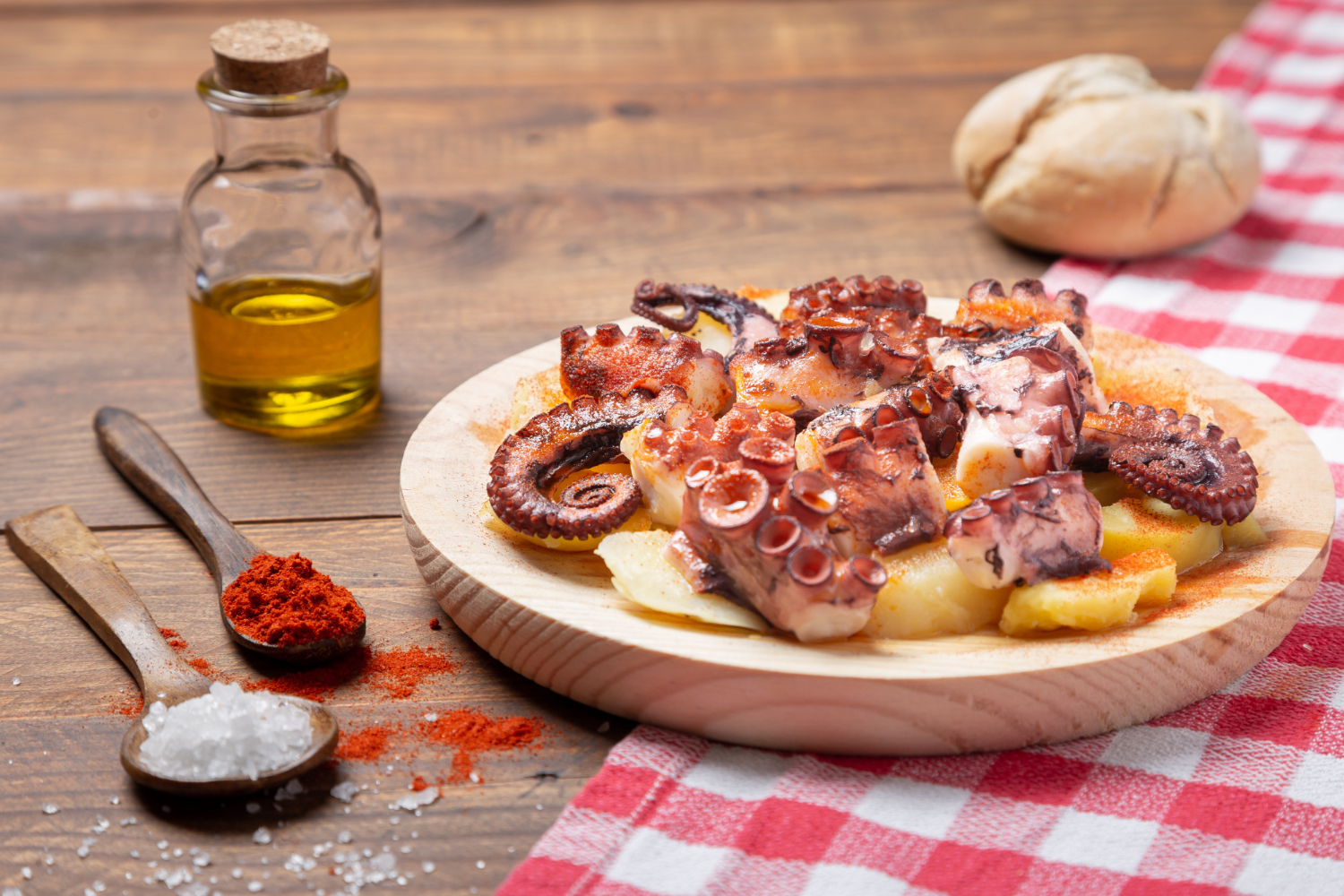The European Atlantic coast stretches over eight thousand kilometres, from Portugal to Norway. Its marine resources and climatic characteristics have led to similarities in food and gastronomic habits. The North Atlantic climate is cooler, with shorter summers and consequently lower agricultural yields. This did not prevent the development of the Scandinavian culinary tradition, which is nowadays in vogue.
On the south corner we find the western side of the Iberian Peninsula, which has different cultural and culinary characteristics. It comprises mainly the northern west of Spain (Galicia and Asturias) and the northern coast of Portugal.
We talk about the Atlantic diet of southern Europe, which, although it has existed for centuries since the Baiona Declaration in 2006, began to be defined as such.
The North-west Iberian eating habits are rooted in pre-Roman culture, Romanization and medieval monasteries. American products, such as maize, potatoes, peppers and tomatoes, were introduced faster in local agriculture than in other regions, shaping the characteristics of this diet. The diversity of seasonal foods in the Atlantic diet makes it difficult to attribute nutritional qualities to an food. Indeed, the basis of this diet cannot be defined on the basis of a particular aliment but rather on the combination of several types of them. The way these aliments are produced, cooked and consumed is what bring the benefits associated to this diet pattern.
This diet includes fish, shellfish, mollusks, crustaceans and cephalopods. These aliments are very important for a healthy and balanced diet. They provide high quality proteins, omega-3 fatty acids, essential fatty acids, vitamins A, D and trace elements such as iodine, selenium or absorbable iron.
Another strength of the Atlantic diet is the variety of vegetables. Brassica species are as diverse as cabbage or cauliflower. Traditionally, these vegetables are grown in all the orchards in the north-west of the Iberian Peninsula and are present in all meals.
The carbohydrate supply comes mainly from potatoes. They are the basis of cooking, to the detriment of pasta and rice, which are typical of the Mediterranean region. Another important source of carbohydrates in this diet is bread made from wholemeal flour and starter dough through a slow fermentation process. Bread is prepared not only with wheat but also with other cereals such as rye or corn.
The chestnut deserves a special remark. It was the main source of carbohydrates till the 18th century, when potato became predominant. The chestnut has a good fat profile and provides one third of the calories compared to walnuts or almonds. Chestnut consumption is limited to the autumn.
It is important to highlight the consumption of olive oil in the Southern Atlantic diet, which can even double that of some Mediterranean regions.
Finally, the other two significant ingredients are beef and dairy products, especially creamy cheeses. They occupy a prominent place in the Atlantic diet as a source of protein of high nutritional value. Pigs and their derivatives play an important role during autumn and winter.
The highlights of this diet are the wide variety of seasonal and local products and the quality of the raw material. In addition, from a nutritional perspective, it is a diet with a large content of fibre and slowly assimilated carbohydrates. A high protein content with high biological value, and products that allow an optimal lipid profile. The food is a simple preparation with little dressing, with a predominance of cooking in water, baking and brazing. These cooking methods preserve nutritional qualities better than other ones.
Recent studies show that the traditional Atlantic diet is as low in carbon footprint as a vegetarian diet which is the most sustainable. In addition, the inhabitants of this region have a high life expectancy with a larger than usual percentage of centenarians.
Tejera-Pérez C, Sánchez-Bao A, Bellido-Guerrero D, Casanueva FF. The Southern Atlantic diet of Europe. Minerva Endocrinol. 2021; 46 (2): 145-160.
Carballo-Casla A, Ortolá R, García-Esquinas E, Oliveira A, Sotos-Prieto M, Lopes C, et al. Southern European Atlantic Diet and mortality from all causes in older adults. BMC Med. 2021; 19 (1): 36.
González-García S, Esteve-Llorens X, Moreira MT, Feijoo G. Carbon Huella and nutritional quality of different human dietary options. SCI Total Environ. 2018; 644: 77-94.
Source: The Conversation



